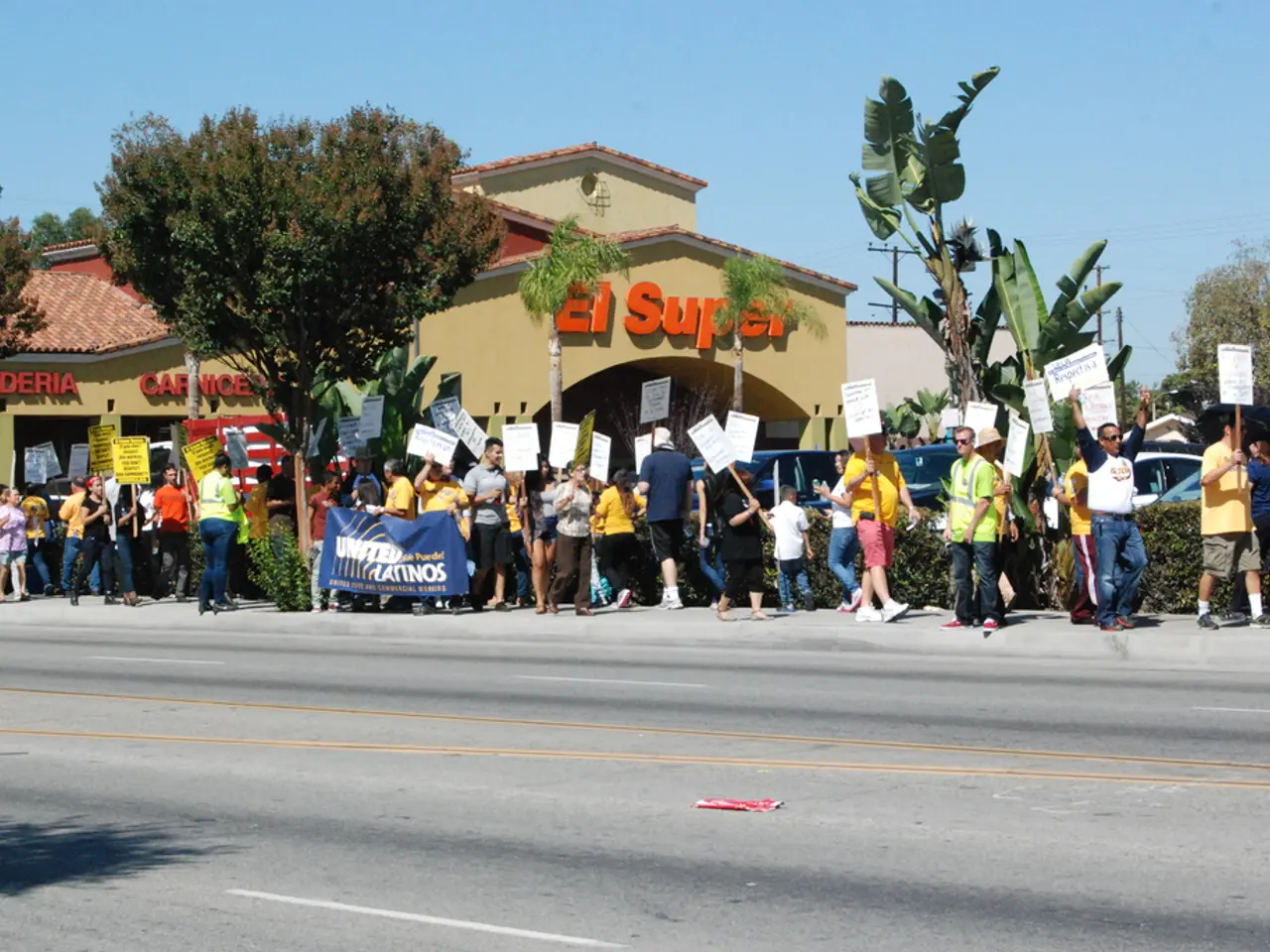Brace for swift relocation to higher elevations: Weather expert issues grave prediction of once-in-a-millennium flood heading for the midwestern United States.
Between April 2 and 6, 2025, the Central U.S. experienced a devastating round of flash flooding and severe storms caused by a slow-moving weather system combined with a stationary front. This event resulted in widespread life-threatening flash floods, numerous tornadoes, and severe storm damage across the Southern and Midwestern United States.
The heavy rainfall, which flowed into the Central U.S. from the tropics on an atmospheric river, was funnelled by a big area of high pressure off the coast of the Southeast U.S. This resulted in a massive deluge of rain in the same few areas, particularly in the Lower Ohio Valley, Mid-South, and Arkansas.
Severe flooding occurred in many parts of the Central and Southern U.S., including Arkansas, Kentucky, Missouri, Indiana, Tennessee, Oklahoma, and Mississippi. Significant rainfall totals were recorded, with Little Rock, Arkansas, receiving nearly double its typical monthly amount, at 12 inches, and Mayfield, Kentucky, recording 13.4 inches of rainfall from April 2-5.
The floodwaters trapped drivers, disrupted communities, and caused widespread infrastructure damage, particularly in areas with already saturated ground. Numerous tornadoes touched down across multiple states, including EF3 tornadoes in Arkansas, Tennessee, and Missouri, which compounded the destruction.
At least 20 fatalities were reported due to flooding and tornadoes during this period. The combination of heavy rainfall and tornado outbreaks complicated recovery efforts and increased the scope of the disaster.
This event ranks among the deadliest flooding and tornado outbreaks in recent U.S. history, with flash flooding often cited as the nation’s top storm-related killer. The flooding and storm damage affected homes, farms, and communities during critical times, such as just before planting season in the Midwest, highlighting the extensive social and economic impacts.
Areas vulnerable to flooding, having already received a great deal of rainfall in recent months, were at particular risk. Furthermore, a new study finds that a 'wobble' in the moon's orbit could result in record flooding in the 2030s, adding to the concerns about future weather events.
In light of this historic event, the need for preparedness and resilient infrastructure in vulnerable areas is more urgent than ever. Forecasters anticipate that the rains will ease off over the weekend, but rivers may continue to rise into next week, posing ongoing risks to those in the affected regions. People in these areas are advised to be prepared to move quickly to higher ground, as relentless rainfall will cause problems in low-lying flood-prone areas first and may evolve into a river flooding problem.
**Summary Table**
| Aspect | Details | |------------------|-----------------------------------------------| | Dates | April 2–6, 2025 | | Primary Causes | Slow-moving weather system, stationary front | | Affected Regions | Central and Southern U.S.: AR, KY, MO, TN, IN, OK, MS | | Rainfall | 12 inches in Little Rock, 13.4 inches in Mayfield | | Tornadoes | 156 confirmed (up to EF3), multiple deadly | | Fatalities | At least 20 from flooding and tornadoes | | Impact | Flooding, trapped residents, infrastructure damage, agricultural disruption |
Sources: [1] National Weather Service [2] AccuWeather [3] National Oceanic and Atmospheric Administration (NOAA)
The floodwaters, exacerbated by climate-change related weather patterns, posed a significant threat to the environmental-science of the affected regions, particularly in relation to weather-forecasting for future events. This event underscores the importance of further studying climate-change and its impact on weather systems, as a 'wobble' in the moon's orbit could potentially lead to record flooding in the 2030s.








